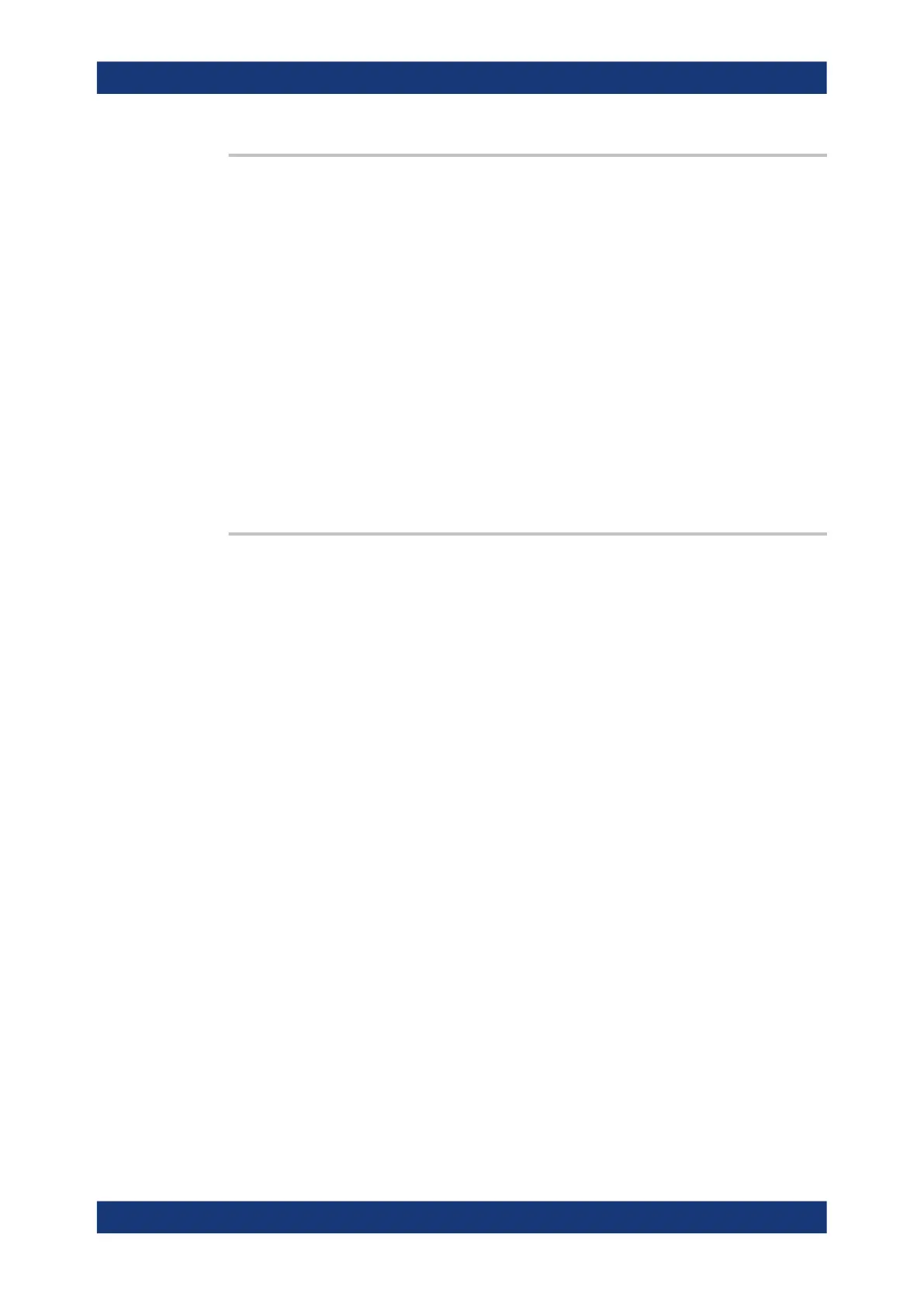Command reference
R&S
®
ZNB/ZNBT
933User Manual 1173.9163.02 ─ 62
CALCulate<Chn>:LIMit:LOWer:SHIFt <LimShift>
CALCulate<Chn>:LIMit:UPPer:SHIFt <LimShift>
These commands shift all lower and upper limit line segments assigned to the active
trace in vertical direction. Both commands shift all limit lines; they have the same func-
tionality. See also Chapter 4.4.1.1, "Rules for limit line definition", on page 145.
Suffix:
<Chn>
.
Channel number used to identify the active trace
Setting parameters:
<LimShift> Response offset value for all limit line segments.
Range: Virtually no restriction for limit segments
Default unit: NN
Example: See CALCulate<Chn>:LIMit:LOWer:FEED
Usage: Setting only
Manual operation: See "Shift Lines" on page 377
CALCulate:LIMit:POINts:LOWer? <TraceName>
CALCulate:LIMit:POINts:UPPer? <TraceName>
Reads the effective lower/upper limit points from a limit line test for an arbitrary (not
necessarily the active) trace, referenced by its name <TraceName>.
"Effective“ means:
●
Only points within the sweep range and only active limit checks are considered.
●
Disabled limit line segments (CALCulate<Chn>:LIMit:SEGMent<Seg>:TYPE
OFF) are ignored.
●
Both linear/logarithmic interpolation and limit line formulae are supported.
●
If there are overlapping limit line segments, only the tighter limit is reported.
Query parameters:
<TraceName> String parameter containing the trace name
Return values:
<Data> Limit points, either in ASCII or block data format, depending on
the current FORMat[:DATA].
One limit point = one value (y-axis) per sweep point (x-axis).
“No limit point” is reported as Not a Number, which is the string
“-NAN(IND)” in ASCII and a float testing true for “isnan”.
If there is no effective limit point, an empty response is returned.
SCPI command reference

